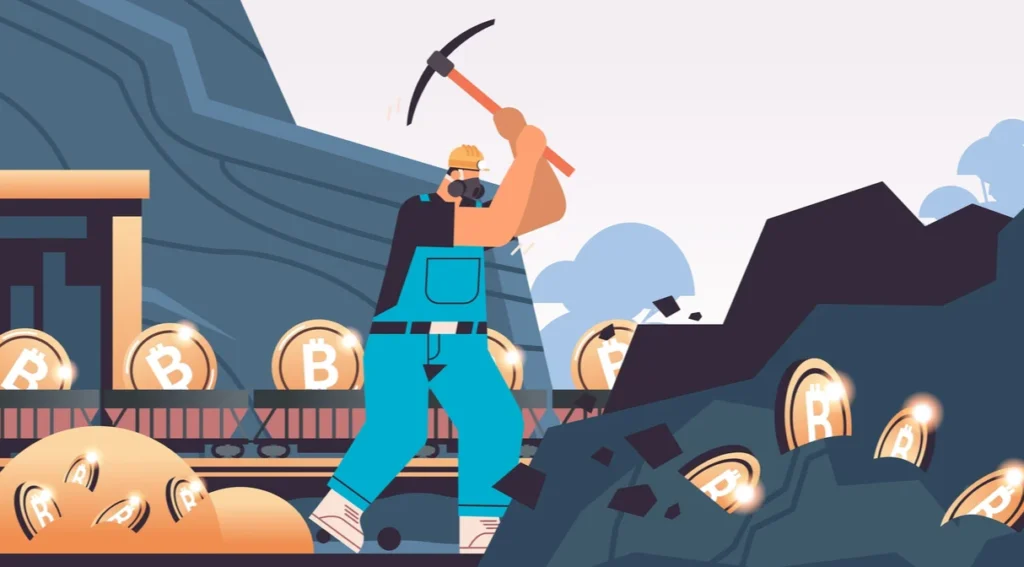The Bitcoin network’s difficulty level dropped by 7.48%, the biggest reduction of the year. This decrease was primarily due to extreme heatwaves in the US and significant power outages in Iran. This drop is one of the biggest in Bitcoin mining difficulty since China’s mining ban in 2021. It also indicates that the global crypto mining infrastructure is undergoing temporary changes.
Mining Operations Halt Amid Heatwave
In June 2025, record-high temperatures scorched large parts of the United States. Particularly in energy-intensive states like Texas, Arizona, and Georgia, where many large-scale mining farms operate. The excessive heat increased residential and industrial electricity demand and pushed energy prices beyond the operational thresholds of many Bitcoin miners. Miners, already working with narrow profit margins, were forced to shut down operations as energy prices surged and power grids came under stress. Several mining companies in Texas voluntarily curtailed operations, including those participating in the ERCOT demand response program to prevent blackouts.  This cooperation with utilities might have earned them operational goodwill, but it also reduced the overall network hashrate, contributing to the observed decline in mining difficulty. Cooling systems in mining facilities are heavily reliant on ambient temperatures. When outside temperatures soar, cooling costs escalate, pushing operating expenses to unsustainable levels. Many firms, especially those without access to long-term power purchase agreements (PPAs). Simply couldn’t afford to keep mining at full capacity under such conditions.
This cooperation with utilities might have earned them operational goodwill, but it also reduced the overall network hashrate, contributing to the observed decline in mining difficulty. Cooling systems in mining facilities are heavily reliant on ambient temperatures. When outside temperatures soar, cooling costs escalate, pushing operating expenses to unsustainable levels. Many firms, especially those without access to long-term power purchase agreements (PPAs). Simply couldn’t afford to keep mining at full capacity under such conditions.
Power Crisis Hits Iranian Miners
The U.S. had to deal with growing energy prices, while Iran had to deal with rolling blackouts that hurt its crypto mining industry. Iran has been a controversial player in the world for a long time. The programme provides registered miners with cheap electricity, but it also allows for numerous illegal mining operations. The national grid was under a lot of stress because the country’s infrastructure was old and the summers were quite hot. In response, the Iranian government ordered many waves of shutdowns for both legal and criminal crypto mining sites.
The Ministry of Energy said that these steps were necessary because they needed to put residential and medical consumption of electricity first. Iran used to have about 4–5% of the world’s Bitcoin hashpower, and it is still a major hub because electricity is cheap there. The rapid cuts in mining activity enforced by the government in the area made the entire network hashrate even lower, adding to the stress caused by the U.S. energy crisis.
Network Adjusts to Hashrate Decline
The Bitcoin mining difficulty drop adjustment algorithm is a feature that keeps the network stable no matter how many miners are working on it. It resets every 2,016 blocks, or around every two weeks, depending on how much computing power is on the network. A 7.48% drop in difficulty is important since it makes it easier to start mining and make money right away. Miners who stay online get more block rewards and less competition, which makes their return on investment per terahash better.
In the past, comparable changes have happened after big changes in politics or the law. For instance, the biggest reduction ever, 28%, happened in July 2021 when China prohibited mining. Which made many miners stop working or move. The present decline of 7.48% is smaller, but it is caused by various things: climate conditions and weaknesses in the energy system, not regulations.
Efficient Miners Gain Profit Edge
The hashprice, which represents the amount of money miners earn for each unit of processing power, has increased significantly due to the reduced number of active miners. Data from a number of mining analytics services show that hashprice has gone up by more than 15% since the change. Miners who are still able to work under favourable energy conditions. Especially those with fixed-rate power contracts or access to renewable energy sources, have welcomed this rise.
Also, newer mining gear like the Bitmain Antminer S21 or the MicroBT WhatsMiner M60 series is more efficient, which means that operators can still make money even when the market is unstable. These miners are now in a better position to take advantage of a stronger mining environment, at least until the network rebalances.
Energy and Mining Deeply Interlinked
Although this break may temporarily benefit miners and analysts by increasing their profits, they all believe that such advantages will not be sustainable. As temperatures cool and energy prices stabilise, offline miners, especially in North America and the Middle East. Are expected to come back, which will raise the network hash rate again. This situation will create more challenges in the future, which will again reduce profit margins. The event shows how the difficulty of Bitcoin mining decreases and energy markets are becoming more and more dependent on each other over time.
Now, miners have to think about more than just the price of Bitcoin and the block rewards. They also have to think about environmental concerns. Energy policies in their area, and how the grid changes. Countries with unreliable electricity networks, such as Iran, may experience intermittent issues in their mining sectors. Conversely, countries with improved infrastructure could attract displaced miners, thereby accelerating the global hashpower balance.
Final thoughts
The program also brings up the topic of grid-integrated mining and how Bitcoin might help balance the energy system. Some mining companies are already cooperating with utilities to function as flexible loads. Turning off their machines during peak hours and taking in extra energy during off-peak hours. Expanding the application of this concept could transform mining from a disruptive force to a stabilising one.
Mining operations can become more resilient to adverse weather by using renewable sources like solar and hydro. This change could not only lessen worries about the environment, but it could also increase miner uptime when the grid is under stress.


